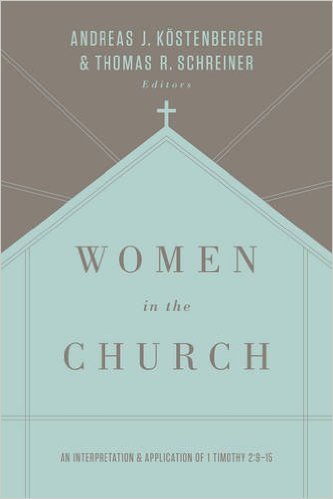In recent months, I received a free copy of the book Women in the Church: An Interpretation and Application of 1 Timothy 2:9-15 by Andreas J. Kostenberger, from Crossway Publishers, in exchange for an honest review of this third edition.
This book is not light reading. I’m nerdy; I like the academic-ness of this volume. But fair warning to anyone who picks this up looking for a quick treatment of the subject of women and the church: you will not breeze this these pages.
Kostenberger has pulled together a handful of respected scholars, and has invited them to tear apart this often-controversial subject, and then has encouraged them to put it back together under the authority of scripture. And, that they have done.
The contributors took the task to heart, and dug deep to the roots of the etymology of the words that surround the subject of women in the church, with a particular focus on the passage found in 1 Timothy 2:9-15.
There were several times that I found myself wishing I had some background knowledge of Greek as I waded through the pages. I think that a cursory level of Greek language orientation would be very helpful in digesting this book. But, it’s not completely necessary; with a bit of patience (something I lack sorely of and had to force myself to be in reading this), the text is readable and understandable by a plain jane average layperson like myself.
But just because I understood it, didn’t always mean that I liked what I read. But liking something, and knowing that something is correct, is too different things. They backed up their thesis extremely well; the scriptural truth of their conclusions were solid. But as a single, divorced former pastor’s wife who is involved in (and loves) her local Southern Baptist church body, and who grew up in an extremely conservative, traditional Southern Baptist environment, but who struggled against that as a teen and as an adult–and who now leans toward reformed theology but still harbors a bit of rebelliousness at times–my default mode is to balk at some of this.
However, I recognize that this balking is out of sinful pride, the vast majority of times I experience it. Complementarianism not only makes sense, it appears–from the thorough research of this book’s contributors, to also be a solid component of God’s design for the church. And, for marriage, too.
And His design is beautiful. Always.
As for the design of the book–I nerdily enjoyed the academic research, but I found the last section–the very applicable roundtable–to be the most beneficial. It was very cool to read brief writings from authors I respect–Rosaria Butterfield, Trillia Newbell, Tony Merida, and others–about how this subject has and is playing out practically both in their ministry and their personal lives.

